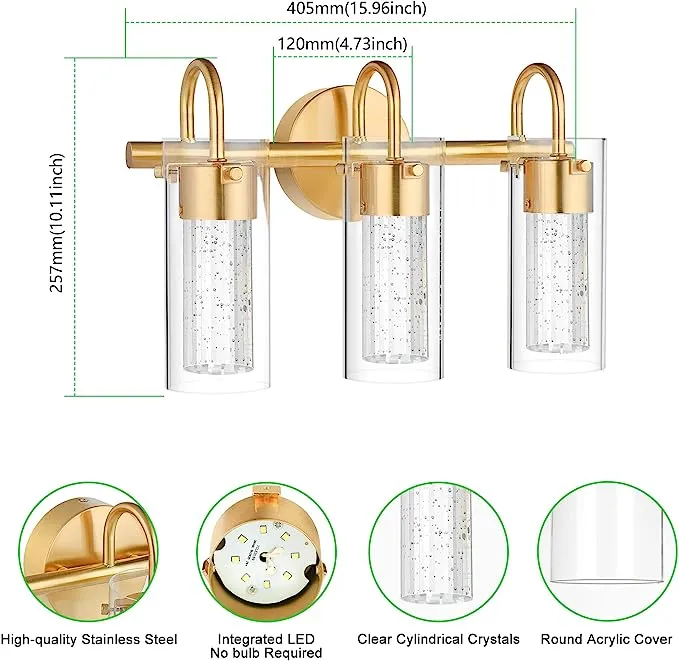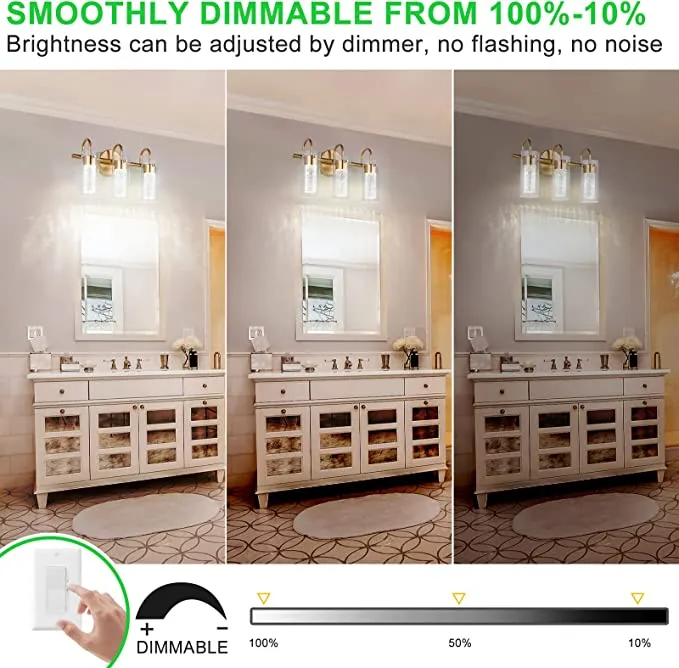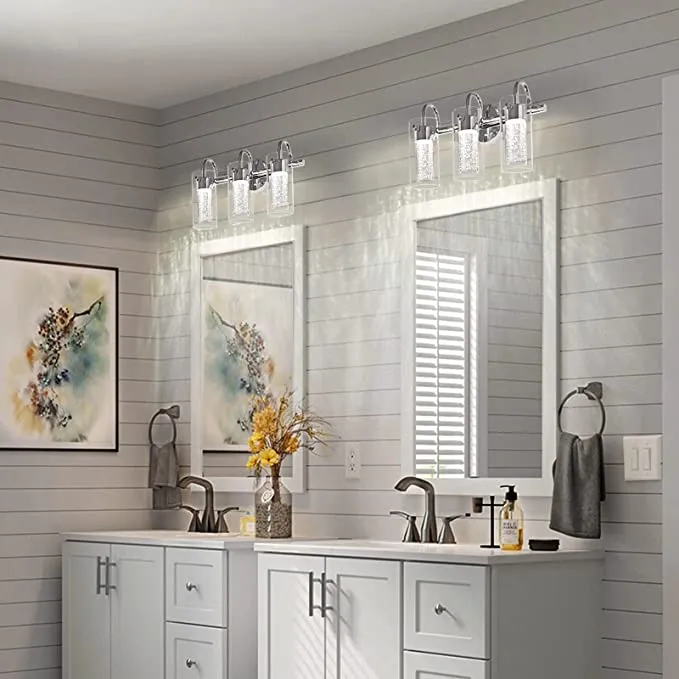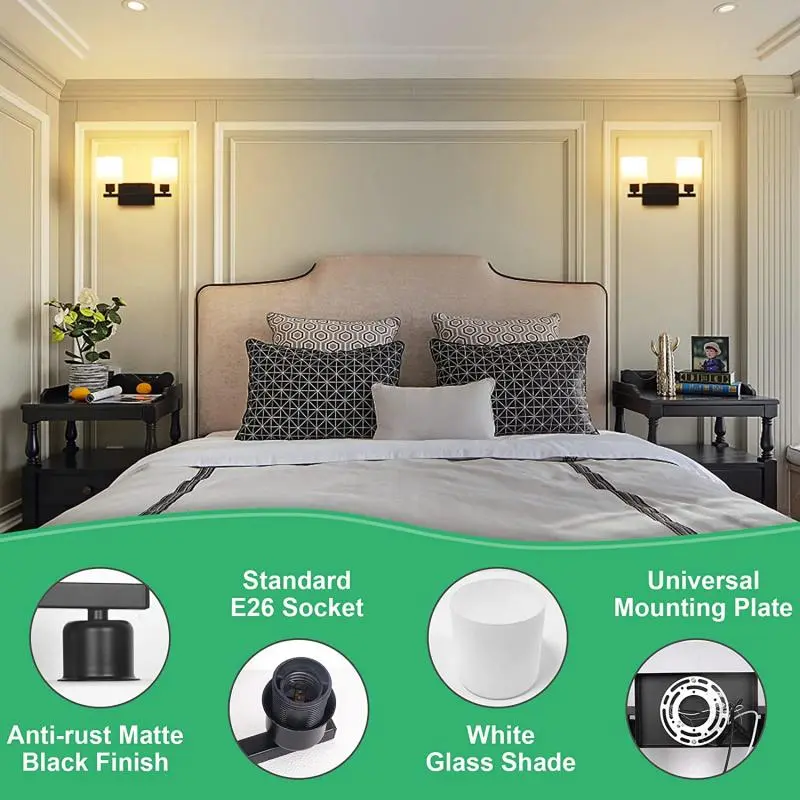How to Measure the Brightness of Home LED Light Fixtures?
When choosing a home LED light fixture, many people often focus on the wattage (W) of the fixture, or its power output. While wattage is an important parameter, it doesn't fully measure the actual brightness of the fixture. The key to brightness is lumens (lm).
Therefore, understanding the relationship between lumens and watts and mastering how to measure LED light brightness are crucial for consumers to choose the right home lighting fixture.
This article will delve into the differences and connections between lumens and watts, explaining how to use these two parameters to correctly evaluate the brightness of home LED light fixtures, helping consumers make informed choices and create a comfortable, energy-efficient lighting environment.

What are lumens and watts?
1. Lumen
Lumen (lm) is a unit used to quantify the brightness of a light source. It represents the total amount of light emitted by a light source per unit time. Simply put, lumens are a standard for measuring the "luminosity" of a light source. For example, when we say a light bulb has 800 lumens, it means that when operating, it emits a total of 800 lumens of light per second. This is a measure of the brightness of a light source, not its power. Lumens are directly related to lighting intensity and more accurately reflect the brightness perceived by our eyes.
For LED lights, higher lumens generally indicate higher brightness and a greater luminous flux (total light output) of the fixture.
2. Watt
Watt (W) is a unit of power used to measure the energy consumed by an electrical appliance. For lighting fixtures, wattage indicates the electrical energy consumed and reflects the efficiency with which electrical energy is converted into light. The higher the wattage, the more energy the fixture consumes.
However, wattage does not directly equate to brightness. Traditional incandescent lamps often use higher wattages to produce higher brightness, while modern LED light fixtures can provide the same or even higher brightness at lower wattages. Due to the higher efficacy of LED technology, it can provide higher lumen output at lower wattages.

Lumens vs. Watts: What's the Difference?
—The biggest difference between lumens and watts is this:
Lumens measure the brightness of light output, while watts measure energy consumption. While both relate to lighting performance, they are not the same thing. When choosing an LED light fixture, wattage tells us how much energy it uses, while lumens tells us how bright it will be.
In the past, the brightness of traditional incandescent lamps often relied on a high wattage. For example, a 100-watt incandescent lamp could produce 1600 lumens. However, LED light fixtures are different. Many LED light fixtures can deliver the same brightness as a 100-watt incandescent lamp using only 12 to 15 watts of power. This is because LED technology is highly efficient, converting more electrical energy into light.
Therefore, when choosing LED lighting, simply looking at wattage doesn't help consumers assess brightness. Instead, focus on lumens, or the luminous flux of the lamp.
How can I choose the brightness of an LED light fixture based on lumens?
1. Lumen Standards
Different home spaces have different brightness requirements, so there are generally some reference standards for the lumen output of home LED light fixtures. The following are recommended illuminance values for common room types:
· Bedroom: 150 to 300 lumens/m²
· Living room: 300 to 500 lumens/m²
· Kitchen: 500 to 700 lumens/m²
· Study/studio: 500 to 800 lumens/m²
· Bathroom: 300 to 500 lumens/m²
These recommended lumen ranges can help consumers choose the appropriate LED light fixture based on the size and functional requirements of the room. Generally speaking, living areas such as bedrooms and living rooms require lower illuminance to maintain a comfortable atmosphere, while functional areas such as kitchens and studies require higher illuminance to support clearer vision.
2. How to Calculate the Required Lumens
To select the appropriate lumen output, first calculate the room size and required illumination. For example:
Suppose we need to illuminate a 20-square-meter living room with a target illumination of 300 lumens/square meter. The required total luminous flux is: Total luminous flux = Room area * Target illuminance = 20 * 300 = 6,000 lumens.
For a bedroom of the same size, assuming a target illumination of 150 lumens/square meter, the required total luminous flux is: Total luminous flux = 20 * 150 = 3,000 lumens.
After calculating the required total luminous flux, consumers can determine the number of lamps needed based on the lumen output of the selected lamps. For example, if each LED light fixture outputs 800 lumens, then at least eight such fixtures are needed to achieve a desired output of 6,000 lumens.
3. The Relationship between Lumens and Brightness Perception
It is important to note that brightness perception is not solely dependent on lumen output; it is also closely related to factors such as lamp design, light distribution, and color temperature. Even if a lamp has a high lumen output, it may not achieve the desired lighting effect if the beam distribution is uneven or the light is too concentrated. Furthermore, the color temperature of light (i.e., its warmth or coolness) also affects people's perception of brightness. Warm white light (2700K-3000K) generally creates a softer, warmer feel, while cool white light (5000K-6500K) appears brighter and clearer.

Wattage and Lumens: How to Choose the Right LED Light Fixture?
1. The Impact of Luminous Efficacy
To understand the relationship between wattage and lumens, it's important to consider the luminous efficacy of an LED light fixture. Luminous efficacy refers to the number of lumens produced per watt of power consumed, typically expressed in lumens/watt (lm/W). Modern LED light fixtures typically have an efficacy between 80 and 120 lm/W, meaning a 10-watt LED light fixture can produce 800 to 1200 lumens.
For example:
If an LED light fixture has a 10-watt power draw and a luminous efficacy of 100 lumens/watt, its lumen output is: 10 watts x 100 lumens/watt = 1000 lumens. If another LED light fixture has a 10-watt power draw and a luminous efficacy of 80 lumens/watt, its lumen output is: 10 watts x 80 lumens/watt = 800 lumens.
Thus, even if two lamps have the same wattage, different luminous efficacy can result in different brightness. When choosing an LED light fixture, consider luminous efficacy in addition to wattage. High-efficiency lamps can provide the same brightness with lower power draw, which is both energy-efficient and environmentally friendly.
2. Comparison of Wattage and Lumens
The relationship between wattage and lumens between traditional incandescent lamps and modern LED light fixtures also differs significantly. The following is a comparison of brightness and wattage for common lamp types:
Lamp Type | Power (Watts) | Lumens |
| Incandescent Lamp | 40W | 450 lumens |
| Incandescent Lamp | 60W | 800 lumens |
| Incandescent Lamp | 100W | 1600 lumens |
| LED Light Fixture | 10W | 800-1000 lumens |
| LED Light Fixture | 15W | 1500-1800 lumens |
| LED Light Fixture | 20W | 2000-2400 lumens |
As you can see, LED light fixtures can provide the same or even higher brightness as incandescent lamps at lower wattage. Therefore, for equivalent lighting effects, LED light fixtures are more energy-efficient.
3. How to Choose the Right LED Light Fixture
When choosing a home LED light fixture, consumers should determine the appropriate wattage and quantity based on the room's needs, the fixture's luminous efficacy, and the desired lumens. Focusing solely on wattage may overlook the differences in luminous efficacy between different LED light fixtures, thus affecting the lighting effect.
To select the right LED light fixture, first determine the required lumens, then calculate the required wattage based on the luminous efficacy. Based on this, consumers can choose an LED light fixture that meets their brightness needs while also being energy-efficient.

What types of businesses usually buy from Huari Lighting?
We supply LED lighting products to a variety of clients including wholesalers, retailers, project contractors, e-commerce brands, and lighting designers. Many of our customers buy in bulk for resale, while others source products for large-scale lighting installations.
Our flexible pricing, OEM/ODM support, and fast delivery make us an ideal supplier for B2B buyers. Whether you're looking to buy affordable LED bulbs or premium architectural lighting, Huari Lighting has the scale and experience to support your purchasing goals.
